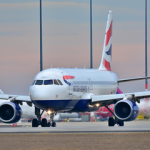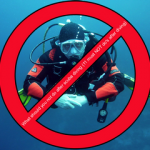
Driving to altitude after diving may be a problem because you may still be decompressing from your dive. It takes time to decompress, and the length of time depends on a number of factors. But what you don’t want is to drive to altitude right after a dive without a long enough surface interval, otherwise you risk decompression sickness.
Driving to altitude after diving: Driving to altitude after diving is dangerous as bubbles can form and decompression sickness can occur because atmospheric pressure drops similar to when you fly. It’s recommended to wait 12-24 hours before you drive to altitude, but is affected by how many times you’ve dived and if they were decompression stop dives.
The best way to do more diving is to book yourself on a scuba diving liveaboard. You can check the latest and best deals on liveaboards using the following window:
Going to altitude after diving can be dangerous because of the following reasons:
- Most decompression models are based on surfacing at sea level and allow for your continued decompression at atmospheric pressure or one atmosphere (1 ATM).
- As you ascend above sea level the air pressure drops below one atmosphere (1 ATM).
- Driving to altitude after diving is similar to flying after diving. When you fly the air pressure also drops below one atmosphere. Depending on the organisation concerned, the guidelines around diving after flying range from waiting 12 hours for a single dive by DAN and PADI to waiting 24 hours recommended by BSAC and The U.S. Air Force (see below).
- You are therefore advised to follow similar flying after diving guidelines when going to altitude after diving.
More Reading: Can you dive and fly on the same day?
Driving to altitude after diving with reference to recommendations from diving after flying
The various organisations around the world have different stipulations about flying after diving. I suggest you use these guidelines when considering going to altitude after diving. That way you remain safe and avoid the risks of getting decompression sickness.
Going to altitude after diving guidelines:
- British Sub Aqua Club (BSAC): While BSAC ’88 tables indicate divers can fly in a pressurised aircraft on a code B, but BSAC suggests you wait 24 hours between diving and flying if possible.
- Divers Alert Network (DAN): DAN recommends a 12 hour minimum surface interval before flying for a single no-decompression dive. But for multiple days of diving and for dives requiring decompression stops, their recommended preflight surface interval is 18 hours.
- The Professional Association of Diving Instructors (PADI): PADI’s flying after diving guidelines say that for a single no-decompression dive, a minimum preflight surface interval of 12 hours is suggested. Whereas for multiple days of diving or for dives requiring decompression stops, a minimum preflight interval of 18 hours is suggested instead.
- The U.S. Air Force: The U.S. Air Force recommend a 24 hour surface interval before flying.
- The U.S. Navy: In contrast to the U.S. Navy use table 9-6 to work out how long the surface interval should be. The recommended surface interval according to the U.S. Navy depends on the number of dives and their depth, together with the height and type of flight. For example is the flight on a commercial airline.
- Dive computers: Most scuba divers use dive computers to monitor their decompression and nitrogen saturation. All dive computers have a no-fly monitor and they will tell you went it’s safe to fly. Dive computers are particularly useful when you’re doing multiple dive days or if you’re doing decompression stop dives. But also, if you are doing nitrox diving or other mixed gas type diving.
Driving to higher elevation after diving needs to be avoided for your own safety – Better to be safe than sorry
Being that I trained with BSAC and on the basis that I prefer to be cautious when it comes to my life, I wait 24 hours before driving to altitude after diving.
The same rules would apply with regards to mountain climbing, riding bikes in the mountains or going skiing after scuba diving. Wait 24 hours to be on the safe side.

But before you decide on how long to wait, you might want to read this:
Divers Alert Network – DAN article:- An Ascent to Altitude After Diving Causes Complications. This article to demonstrate the problems that can come from not following safe diving guidance.
The Diver:
He is a 48-year-old man, 6 feet, 1 inch (185cm), who weighs 225 pounds (101kg). At the time of his dives, he had no medical problems and used no medication. He has been a certified diver since 1999, with 78 dives.
The Dives:
He spent four days diving in Mexico. During that time, he made eight dives, with a maximum depth of 82 feet (25 msw). His last dive went to a maximum depth of 53 fsw (16 msw) and ended at 9:20 p.m. All dives lasted 48 minutes, with an hour surface interval between dives. He made all his dives on air, using a computer as his dive planner. He had no problems with any of his dives and felt fine after his last dive, which had to be rescheduled from the previous night.
The Complications:
The next day, 12 hours after his last dive, he flew a short hop in an unpressurized aircraft at 3,000 feet (904 meters). After a three-hour layover, he then flew on a pressurized charter flight home. He made the flight home without incident, and felt no different than when he left for his vacation. The next morning he woke up feeling fatigued. During the day, he experienced problems with short-term memory. A DAN Member, he contacted the DAN Diving Emergency Hotline; he was advised to go to a hospital for evaluation. The medical facility closest to him did not have a hyperbaric facility.
The Diagnosis:
He arrived at the local hospital and, after an evaluation of his symptoms, he was placed on 100 percent oxygen via non-rebreather face mask. After one hour of oxygen, he said his fatigue and confusion had not resolved. He was advised to go to the university medical center hyperbaric facility for further evaluation. He drove himself there the next day, another 24-hour delay.After further evaluation, he was diagnosed with DCS-II and placed in the hyperbaric chamber for treatment.
To read the full article: Divers Alert Network – DAN – An Ascent to Altitude After Diving Causes Complications
I hope you enjoyed this article about driving to altitude after diving
I’d love to hear from you. Tell us about your adventures of diving and snorkelling. Please use the comments section below. Please also share your photos. Either from your underwater cameras or videos from your waterproof go-pro’s!
If this article hasn’t answered all of your questions. If you have more questions either about snorkelling or scuba diving (or specifically about driving to altitude after diving), please comment below with your questions.
There will also be many more articles about scuba and scuba diving safety tips (and on snorkelling too) for you to read and learn about this fabulous sport.
Have fun and be safe!




